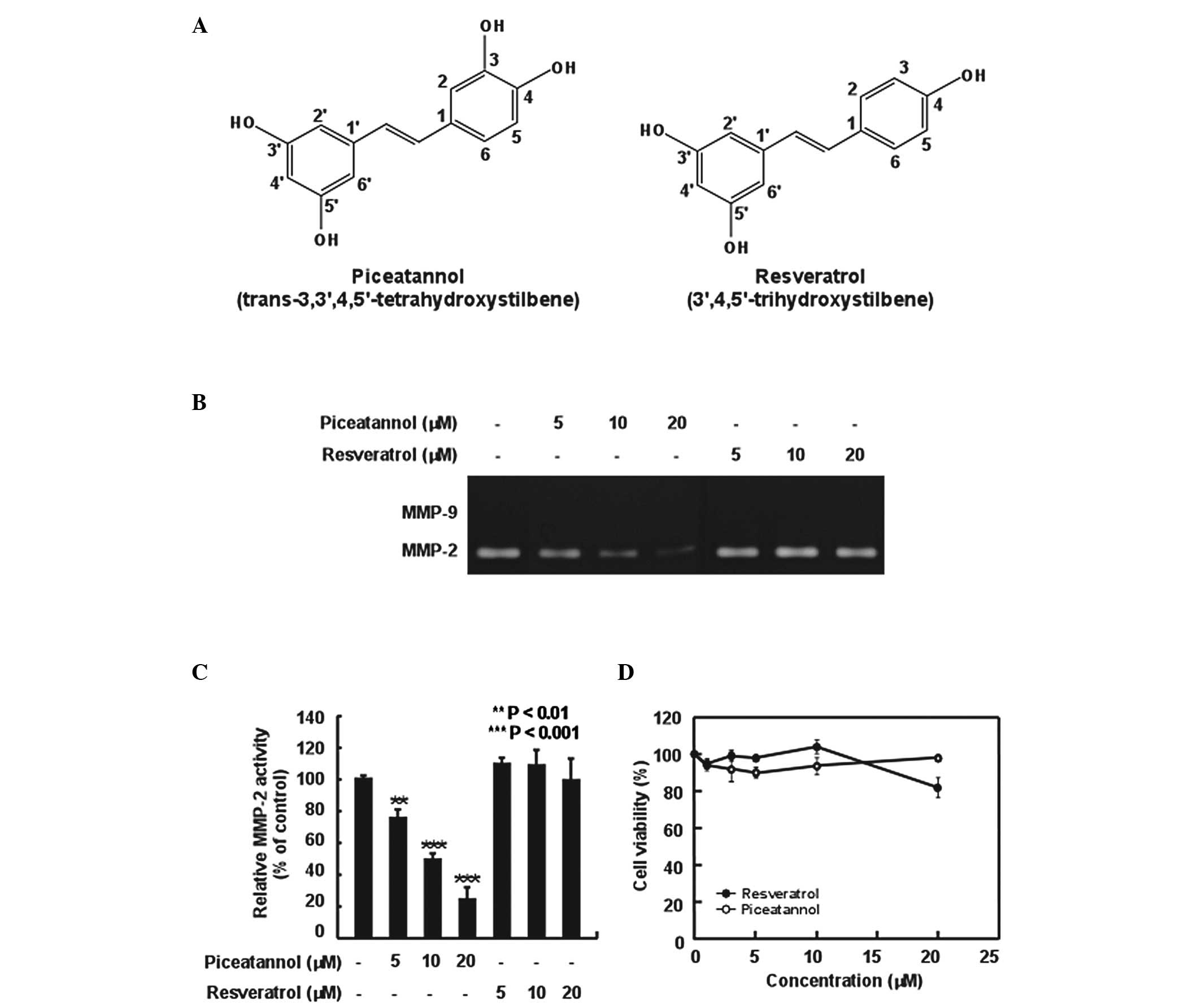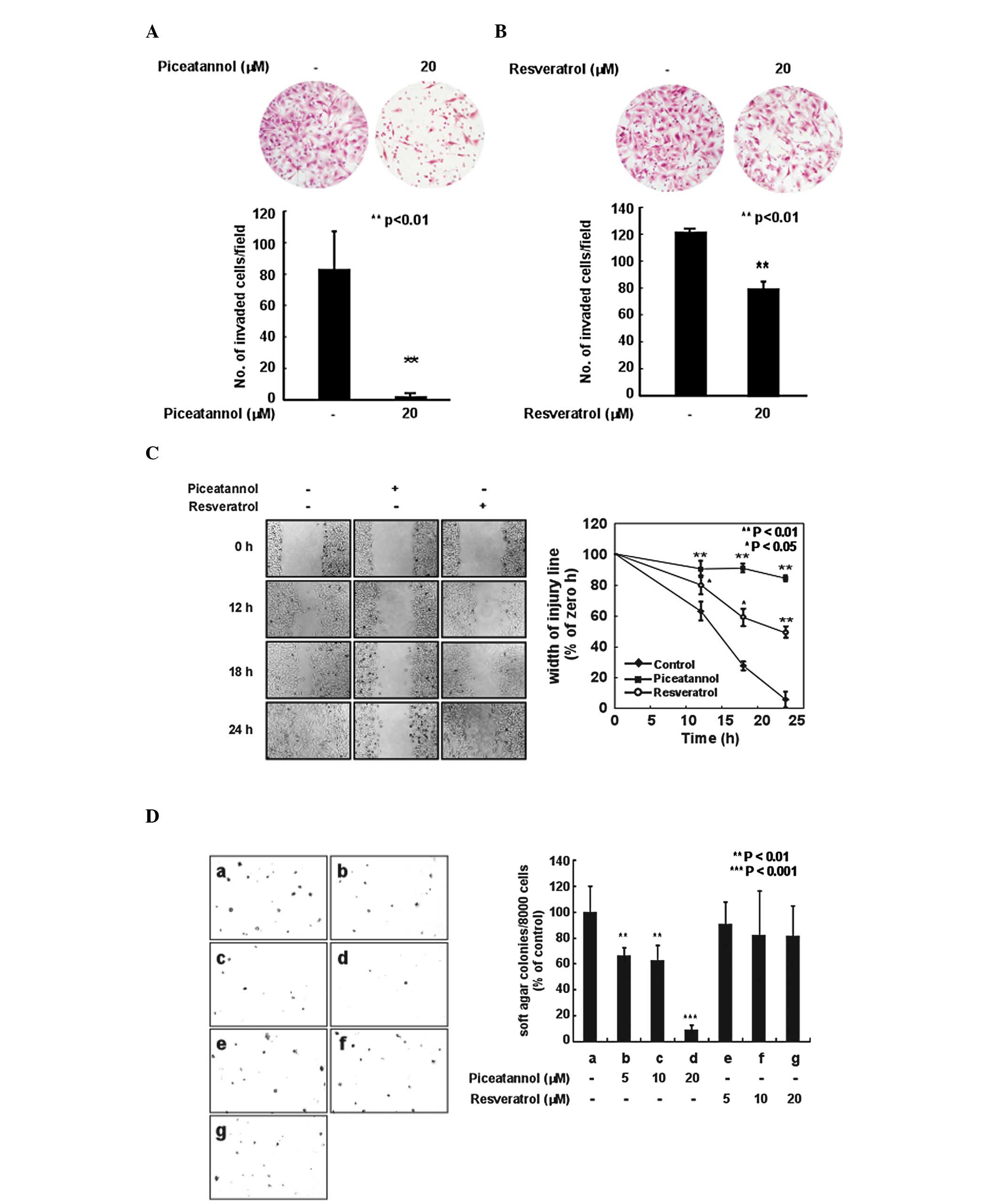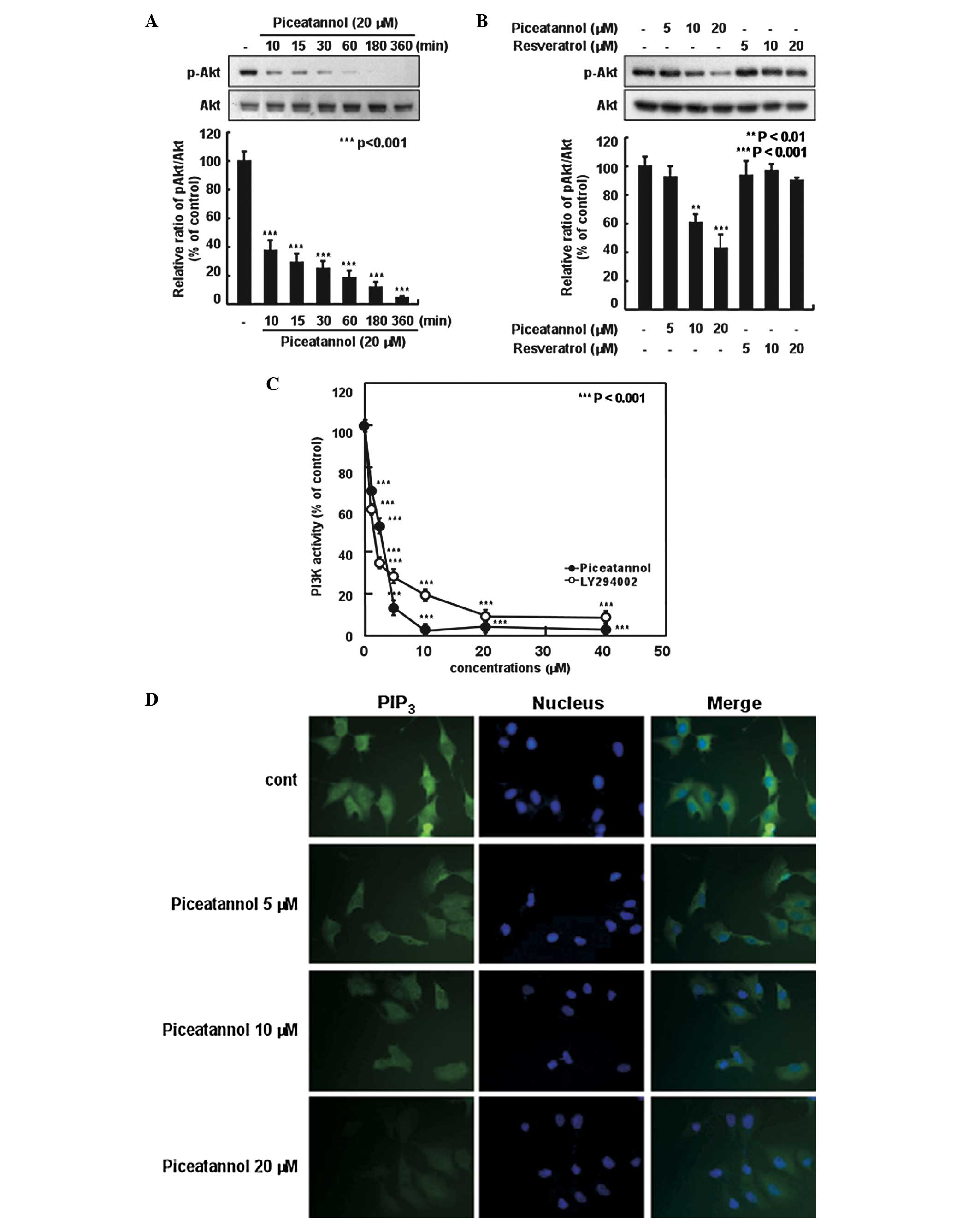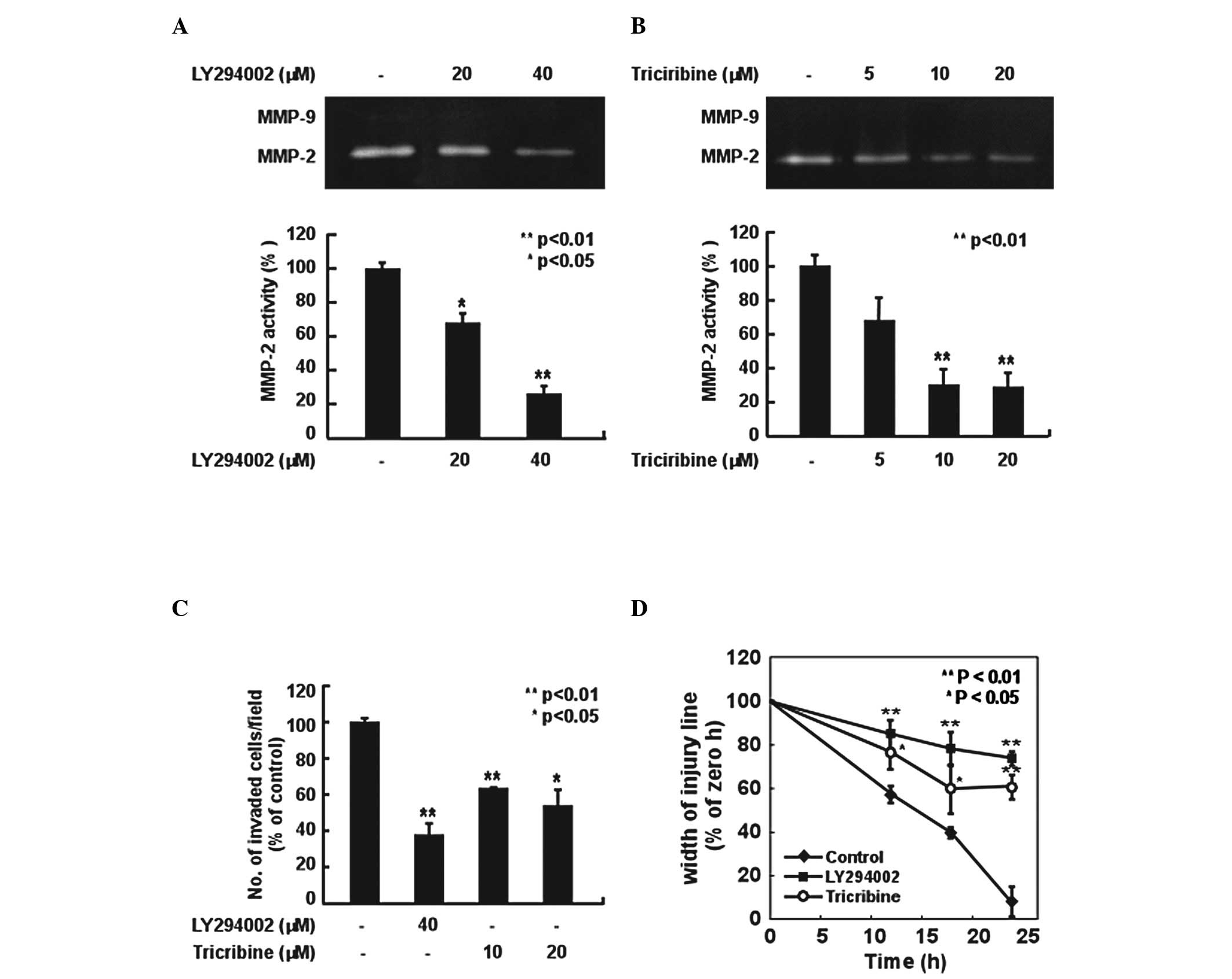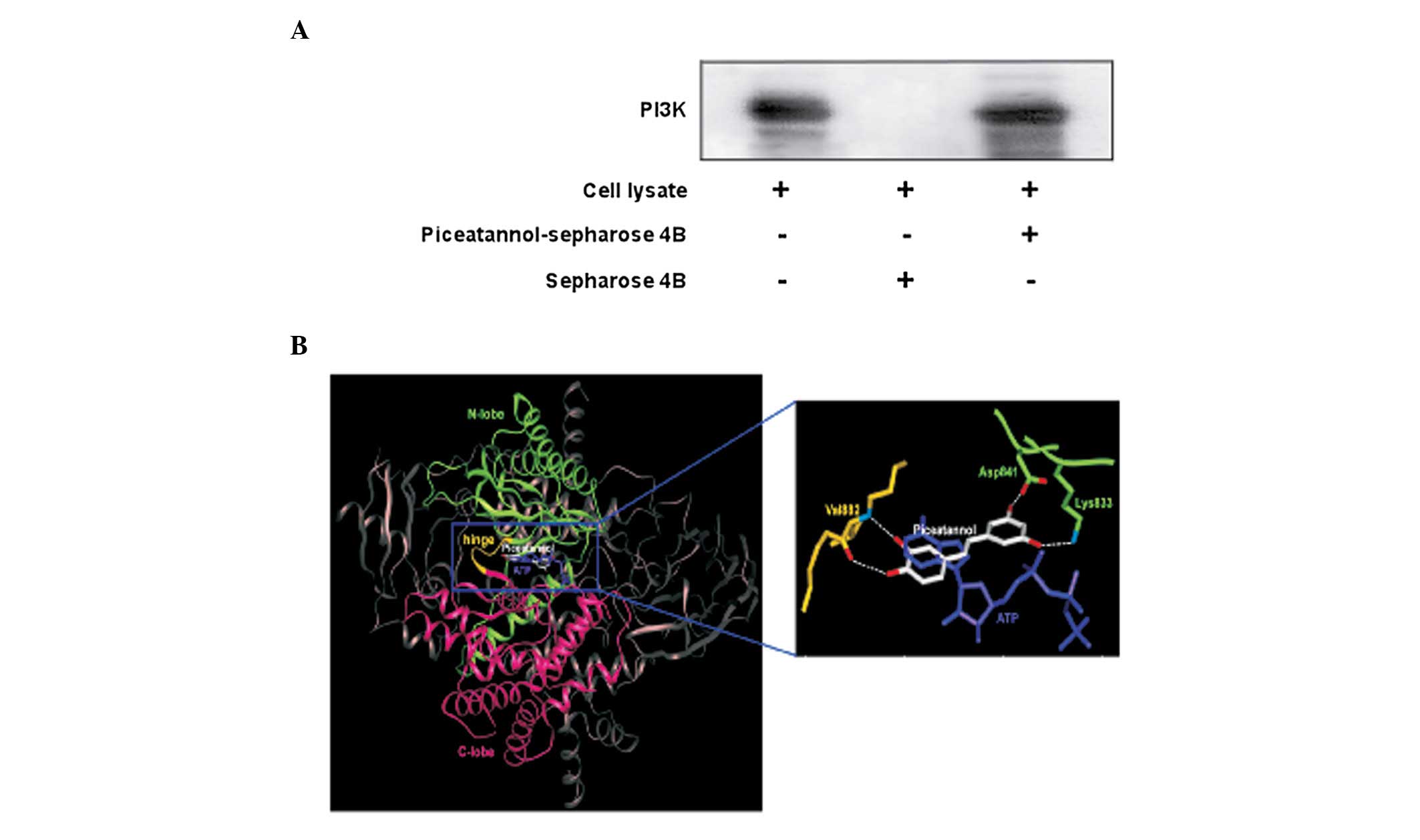|
1
|
Sporn MB: The war on cancer. Lancet.
347:1377–1381. 1996. View Article : Google Scholar : PubMed/NCBI
|
|
2
|
Fidler IJ: Critical factors in the biology
of human cancer metastasis: twenty-eighth G.H.A. Clowes memorial
award lecture. Cancer Res. 50:6130–6138. 1990.PubMed/NCBI
|
|
3
|
Liotta LA, Steeg PS and Stetler-Stevenson
WG: Cancer metastasis and angiogenesis: an imbalance of positive
and negative regulation. Cell. 64:327–336. 1991. View Article : Google Scholar : PubMed/NCBI
|
|
4
|
Sato H, Takino T, Okada Y, et al: A matrix
metalloproteinase expressed on the surface of invasive tumour
cells. Nature. 370:61–65. 1994. View
Article : Google Scholar : PubMed/NCBI
|
|
5
|
McCawley LJ and Matrisian LM: Matrix
metalloproteinases: multifunctional contributors to tumor
progression. Mol Med Today. 6:149–156. 2000. View Article : Google Scholar : PubMed/NCBI
|
|
6
|
Kallakury BV, Karikehalli S, Haholu A,
Sheehan CE, Azumi N and Ross JS: Increased expression of matrix
metalloproteinases 2 and 9 and tissue inhibitors of
metalloproteinases 1 and 2 correlate with poor prognostic variables
in renal cell carcinoma. Clin Cancer Res. 7:3113–3119.
2001.PubMed/NCBI
|
|
7
|
Stetler-Stevenson WG: Type IV collagenases
in tumor invasion and metastasis. Cancer Metastasis Rev. 9:289–303.
1990. View Article : Google Scholar : PubMed/NCBI
|
|
8
|
Tryggvason K, Hoyhtya M and Pyke C: Type
IV collagenases in invasive tumors. Breast Cancer Res Treat.
24:209–218. 1993. View Article : Google Scholar : PubMed/NCBI
|
|
9
|
Shin I, Kim S, Song H, Kim HR and Moon A:
H-Ras-specific activation of Rac-MKK3/6-p38 pathway: its critical
role in invasion and migration of breast epithelial cells. J Biol
Chem. 280:14675–14683. 2005. View Article : Google Scholar : PubMed/NCBI
|
|
10
|
Kiaris H and Spandidos DA: Mutations of
ras genes in human tumours. Int J Oncol. 7:413–421.
1995.
|
|
11
|
Clair T, Miller WR and Cho-Chung YS:
Prognostic significance of the expression of a ras protein with a
molecular weight of 21,000 by human breast cancer. Cancer Res.
47:5290–5293. 1987.PubMed/NCBI
|
|
12
|
Clark GJ and Der CJ: Aberrant function of
the Ras signal transduction pathway in human breast cancer. Breast
Cancer Res Treat. 35:133–144. 1995. View Article : Google Scholar : PubMed/NCBI
|
|
13
|
Watson DM, Elton RA, Jack WJ, Dixon JM,
Chetty U and Miller WR: The H-ras oncogene product p21 and
prognosis in human breast cancer. Breast Cancer Res Treat.
17:161–169. 1991. View Article : Google Scholar : PubMed/NCBI
|
|
14
|
Moon A, Kim MS, Kim TG, et al: H-ras, but
not N-ras, induces an invasive phenotype in human breast epithelial
cells: a role for MMP-2 in the H-ras-induced invasive phenotype.
Int J Cancer. 85:176–181. 2000. View Article : Google Scholar : PubMed/NCBI
|
|
15
|
Dhillon AS, Meikle S, Yazici Z, Eulitz M
and Kolch W: Regulation of Raf-1 activation and signalling by
dephosphorylation. EMBO J. 21:64–71. 2002. View Article : Google Scholar : PubMed/NCBI
|
|
16
|
Wymann MP, Zvelebil M and Laffargue M:
Phosphoinositide 3-kinase signalling - which way to target? Trends
Pharmacol Sci. 24:366–376. 2003. View Article : Google Scholar : PubMed/NCBI
|
|
17
|
Vivanco I and Sawyers CL: The
phosphatidylinositol 3-Kinase AKT pathway in human cancer. Nat Rev
Cancer. 2:489–501. 2002. View
Article : Google Scholar : PubMed/NCBI
|
|
18
|
Chang F, Lee JT, Navolanic PM, et al:
Involvement of PI3K/Akt pathway in cell cycle progression,
apoptosis, and neoplastic transformation: a target for cancer
chemotherapy. Leukemia. 17:590–603. 2003. View Article : Google Scholar : PubMed/NCBI
|
|
19
|
Blume-Jensen P and Hunter T: Oncogenic
kinase signalling. Nature. 411:355–365. 2001. View Article : Google Scholar : PubMed/NCBI
|
|
20
|
Sliva D, Rizzo MT and English D:
Phosphatidylinositol 3-kinase and NF-kappaB regulate motility of
invasive MDA-MB-231 human breast cancer cells by the secretion of
urokinase-type plasminogen activator. J Biol Chem. S277:3150–3157.
2002. View Article : Google Scholar
|
|
21
|
Sizemore N, Leung S and Stark GR:
Activation of phosphatidylinositol 3-kinase in response to
interleukin-1 leads to phosphorylation and activation of the
NF-kappaB p65/RelA subunit. Mol Cell Biol. 19:4798–4805.
1999.PubMed/NCBI
|
|
22
|
Estrov Z, Shishodia S, Faderl S, et al:
Resveratrol blocks interleukin-1beta-induced activation of the
nuclear transcription factor NF-kappaB, inhibits proliferation,
causes S-phase arrest, and induces apoptosis of acute myeloid
leukemia cells. Blood. 02:987–995. 2003. View Article : Google Scholar
|
|
23
|
Mgbonyebi OP, Russo J and Russo IH:
Antiproliferative effect of synthetic resveratrol on human breast
epithelial cells. Int J Oncol. 12:865–869. 1998.PubMed/NCBI
|
|
24
|
Hsieh TC and Wu JM: Differential effects
on growth, cell cycle arrest, and induction of apoptosis by
resveratrol in human prostate cancer cell lines. Exp Cell Res.
249:109–115. 1999. View Article : Google Scholar : PubMed/NCBI
|
|
25
|
Potter GA, Patterson LH, Wanogho E, et al:
The cancer preventative agent resveratrol is converted to the
anticancer agent piceatannol by the cytochrome P450 enzyme CYP1B1.
Br J Cancer. 86:774–778. 2002. View Article : Google Scholar : PubMed/NCBI
|
|
26
|
Ashikawa K, Majumdar S, Banerjee S, Bharti
AC, Shishodia S and Aggarwal BB: Piceatannol inhibits TNF-induced
NF-kappaB activation and NF-kappaB-mediated gene expression through
suppression of IkappaBalpha kinase and p65 phosphorylation. J
Immunol. 169:6490–6497. 2002. View Article : Google Scholar : PubMed/NCBI
|
|
27
|
Roupe KA, Remsberg CM, Yanez JA and Davies
NM: Pharmacometrics of stilbenes: seguing towards the clinic. Curr
Clin Pharmacol. 1:81–101. 2006. View Article : Google Scholar : PubMed/NCBI
|
|
28
|
Hanahan D and Weinberg RA: The hallmarks
of cancer. Cell. 100:57–70. 2000. View Article : Google Scholar
|
|
29
|
Briviba K, Pan L and Rechkemmer G: Red
wine polyphenols inhibit the growth of colon carcinoma cells and
modulate the activation pattern of mitogen-activated protein
kinases. J Nutr. 132:2814–2818. 2002.PubMed/NCBI
|
|
30
|
Hakimuddin F, Paliyath G and Meckling K:
Treatment of mcf-7 breast cancer cells with a red grape wine
polyphenol fraction results in disruption of calcium homeostasis
and cell cycle arrest causing selective cytotoxicity. J Agric Food
Chem. 54:7912–7923. 2006. View Article : Google Scholar
|
|
31
|
Saiko P, Szakmary A, Jaeger W and Szekeres
T: Resveratrol and its analogs: Defense against cancer, coronary
disease and neurodegenerative maladies or just a fad? Mutat Res.
658:68–94. 2008. View Article : Google Scholar : PubMed/NCBI
|
|
32
|
Chambers AF, Groom AC and MacDonald IC:
Dissemination and growth of cancer cells in metastatic sites. Nat
Rev Cancer. 2:563–572. 2002. View
Article : Google Scholar : PubMed/NCBI
|
|
33
|
Steeg PS: Tumor metastasis: mechanistic
insights and clinical challenges. Nat Med. 12:895–904. 2006.
View Article : Google Scholar : PubMed/NCBI
|
|
34
|
Liotta LA, Thorgeirsson UP and Garbisa S:
Role of collagenases in tumor cell invasion. Cancer Metastasis Rev.
1:277–288. 1982. View Article : Google Scholar : PubMed/NCBI
|
|
35
|
Liotta LA: Tumor invasion and
metastases-role of the extracellular matrix: Rhoads Memorial Award
lecture. Cancer Res. 46:1–7. 1986.PubMed/NCBI
|
|
36
|
Geiger TR and Peeper DS: Metastasis
mechanisms. Biochim Biophys Acta. 1796:293–308. 2009.PubMed/NCBI
|
|
37
|
Bourne HR, Sanders DA and McCormick F: The
GTPase superfamily: conserved structure and molecular mechanism.
Nature. 349:117–127. 1991. View Article : Google Scholar : PubMed/NCBI
|
|
38
|
Malumbres M and Barbacid M: To cycle or
not to cycle: a critical decision in cancer. Nat Rev Cancer.
1:222–231. 2001. View Article : Google Scholar : PubMed/NCBI
|
|
39
|
Feig LA and Buchsbaum RJ: Cell signaling:
life or death decisions of ras proteins. Curr Biol. 12:R259–R261.
2002. View Article : Google Scholar : PubMed/NCBI
|
|
40
|
Inukai K, Funaki M, Ogihara T, et al:
p85alpha gene generates three isoforms of regulatory subunit for
phosphatidylinositol 3-kinase (PI 3-Kinase), p50alpha, p55alpha,
and p85alpha, with different PI 3-kinase activity elevating
responses to insulin. J Biol Chem. 272:7873–7882. 1997. View Article : Google Scholar : PubMed/NCBI
|
|
41
|
Ueki K, Algenstaedt P, Mauvais-Jarvis F
and Kahn CR: Positive and negative regulation of phosphoinositide
3-kinase-dependent signaling pathways by three different gene
products of the p85alpha regulatory subunit. Mol Cell Biol.
20:8035–8046. 2000. View Article : Google Scholar : PubMed/NCBI
|
|
42
|
Cantley LC: The phosphoinositide 3-kinase
pathway. Science. 296:1655–1657. 2002. View Article : Google Scholar : PubMed/NCBI
|
|
43
|
Rodriguez-Viciana P, Warne PH, Dhand R, et
al: Phospha-tidylinositol-3-OH kinase as a direct target of Ras.
Nature. 370:527–532. 1994. View Article : Google Scholar : PubMed/NCBI
|
|
44
|
Walker EH, Pacold ME, Perisic O, et al:
Structural determinants of phosphoinositide 3-kinase inhibition by
wortmannin, LY294002, quercetin, myricetin, and staurosporine. Mol
Cell. 6:909–919. 2000. View Article : Google Scholar : PubMed/NCBI
|
|
45
|
Walker EH, Perisic O, Ried C, Stephens L
and Williams RL: Structural insights into phosphoinositide 3-kinase
catalysis and signalling. Nature. 402:313–320. 1999. View Article : Google Scholar : PubMed/NCBI
|
|
46
|
Choi KH, Kim JE, Song NR, et al:
Phosphoinositide-3-kinase is a novel target of piceatannol for
inhibiting PDGF-BB-induced proliferation and migration in human
aortic smooth muscle cells. Cardiovasc Res. 85:836–844. 2010.
View Article : Google Scholar : PubMed/NCBI
|
|
47
|
Frojdo S, Cozzone D, Vidal H and Pirola L:
Resveratrol is a class IA phosphoinositide 3-kinase inhibitor.
Biochem J. 406:511–518. 2007. View Article : Google Scholar : PubMed/NCBI
|



